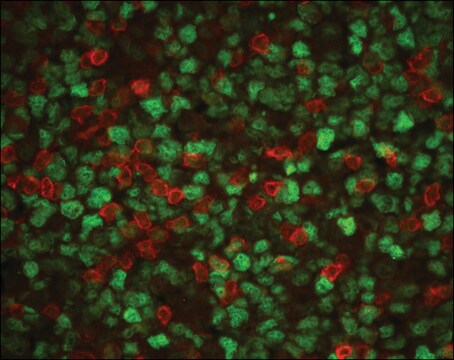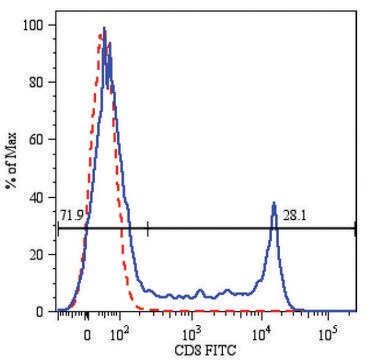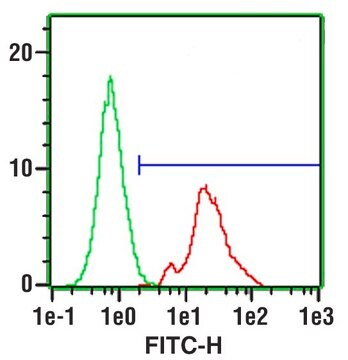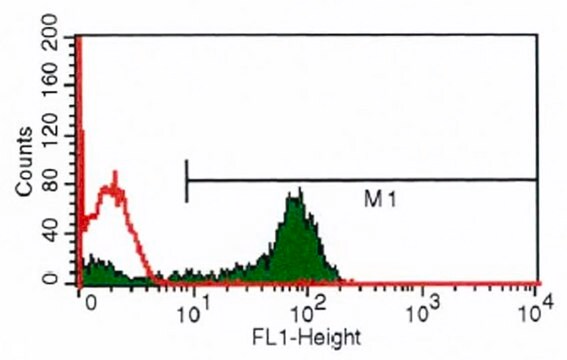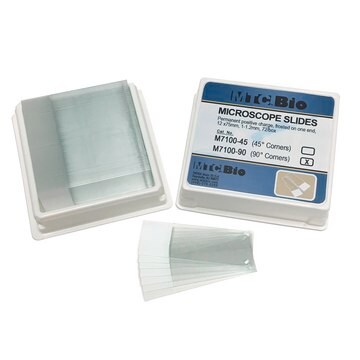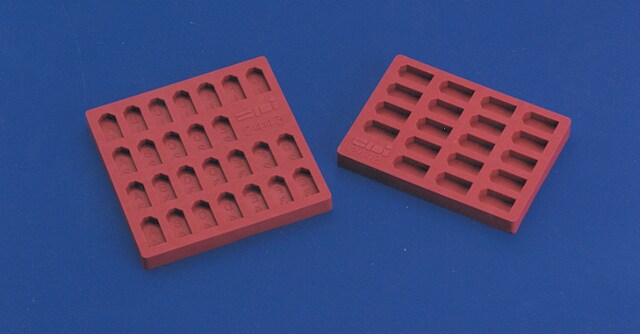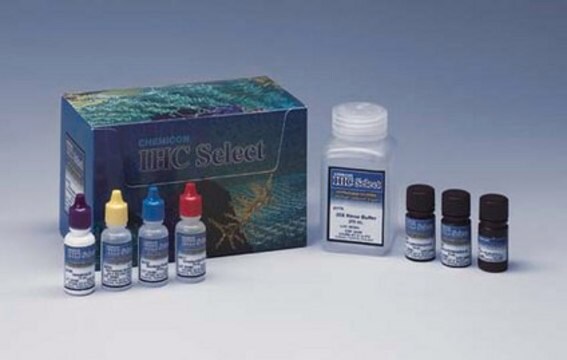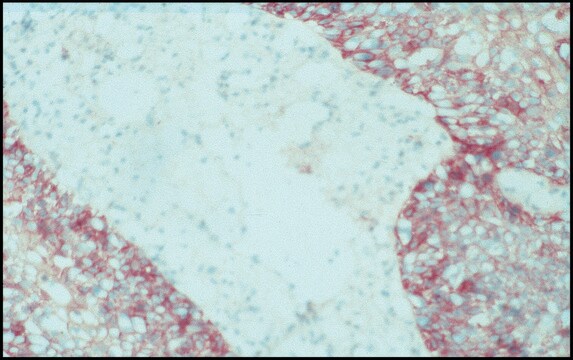F0772
Monoclonal Anti-CD8−FITC antibody produced in mouse
clone UCHT-4, purified immunoglobulin, buffered aqueous solution
Sinonimo/i:
Monoclonal Anti-CD8
Autenticatiper visualizzare i prezzi riservati alla tua organizzazione & contrattuali
About This Item
Codice UNSPSC:
12352203
NACRES:
NA.44
Prodotti consigliati
Origine biologica
mouse
Livello qualitativo
Coniugato
FITC conjugate
Forma dell’anticorpo
purified immunoglobulin
Tipo di anticorpo
primary antibodies
Clone
UCHT-4, monoclonal
Stato
buffered aqueous solution
Reattività contro le specie
human
tecniche
flow cytometry: 10 μL using 1 × 106 cells
Isotipo
IgG2a
N° accesso UniProt
Condizioni di spedizione
wet ice
Temperatura di conservazione
2-8°C
modifica post-traduzionali bersaglio
unmodified
Cerchi prodotti simili? Visita Guida al confronto tra prodotti
Descrizione generale
Monoclonal Anti-Human CD8 (mouse IgG2a isotype) is derived from the hybridoma produced by the fusion of mouse myeloma cell line NS-1 and splenocytes from Balb/c mice immunized with human thymocytes followed by peripheral blood T cells. The CD8 antigen is strongly expressed on approximately one-third of mature T cells (cytotoxic/suppressor T cells). Monoclonal Anti-CD8 does not stain B lymphocytes, monocytes, or granulocytes.
Specificità
Recognizes the CD8 human T cytotoxic/suppressor lymphocyte cell surface glycoprotein. Approximately 90% of thymocytes are stained in suspension. In thymus sections, both cortical and medullary thymocytes are stained. A subset of NK cells express this antigen weakly. The epitope recognized by this clone is sensitive to routine formalin fixation and paraffin embedding.
3rd Workshop: code no. 567
3rd Workshop: code no. 567
Immunogeno
human thymocytes followed by peripheral blood T cells.
Applicazioni
FITC Monoclonal Anti-Human CD8 may be used for:
- Immunofluorescent staining,
- Enumeration of total T cytotoxic/suppressor lymphocytes in bone marrow, blood and other body fluids,
- Identification and localization of T cytotoxic/ suppressor lymphocytes in lymphoid and other tissues,
- Analysis of cell mediated cytotoxicity,
- Studies of immunoregulation in health and disease,
- Investigation of NK cells, Complement mediated cytolysis of CD8 expressing cells
Azioni biochim/fisiol
CD8a (Cluster of Differentiation 8a) is a human gene. CD8 bind to class I MHC and the co-receptors during the process of cytotoxic T-cell activation. T cells that express T cell receptor (TCR) complexes, which lack CD3 δ, exhibit severely impaired positive selection and TCR-mediated activation of CD8 single-positive T cells. CD3 δ couples with TCR. The CD3 associated with CD8 is required for effective activation and positive selection of CD8+ T cells. CD8 expression is a recurrent rare phenomenon in patients with chronic lymphocytic leukemia (CLL).
Descrizione del bersaglio
CD8 is a two chain complex (α/α, α/β) receptor for Class I MHC molecules. The receptor′s cytoplasmic portion is associated with p56lck protein tyrosine kinase which phosphorylates nearby proteins. The antigen is strongly expressed on approximately one third of mature T cells (cytotoxic/suppressor T cells).
Stato fisico
Solution in 0.01 M phosphate buffered saline, pH 7.4, containing 1% bovine serum albumin and 15 mM sodium azide.
Nota sulla preparazione
Prepared by conjugation to fluorescein isothiocyanate isomer I (FITC). This green dye is efficiently excited at 495 nm and emits at 525 nm.
Esclusione di responsabilità
Unless otherwise stated in our catalog or other company documentation accompanying the product(s), our products are intended for research use only and are not to be used for any other purpose, which includes but is not limited to, unauthorized commercial uses, in vitro diagnostic uses, ex vivo or in vivo therapeutic uses or any type of consumption or application to humans or animals.
Non trovi il prodotto giusto?
Prova il nostro Motore di ricerca dei prodotti.
Codice della classe di stoccaggio
10 - Combustible liquids
Classe di pericolosità dell'acqua (WGK)
nwg
Punto d’infiammabilità (°F)
Not applicable
Punto d’infiammabilità (°C)
Not applicable
Scegli una delle versioni più recenti:
Possiedi già questo prodotto?
I documenti relativi ai prodotti acquistati recentemente sono disponibili nell’Archivio dei documenti.
Stefan Mehrle et al.
Immunology and cell biology, 83(1), 33-39 (2005-01-22)
Signalling lymphocyte activation molecule (SLAM)-associated protein (SAP) is a small protein that is mutant in humans with X-linked lymphoproliferative (XLP) disease. Patients with XLP disease are affected by fatal EBV infection and malignant B-cell lymphomas. The increased risk for B-cell
Stefan Mehrle et al.
Molecular immunology, 45(3), 796-804 (2007-08-19)
Signaling lymphocyte activation molecule (SLAM, CD150) is a co-stimulatory receptor involved in T cell activation. The activity of CD150 is dependent on the intracellular signaling molecule SAP. Here, we investigated anti-CD3 activated human lymphocytes, transfected either with CD150-plasmid or with
G F Gao et al.
Immunology today, 21(12), 630-636 (2000-12-15)
In recent years, substantial progress has been made towards understanding the molecular basis for CD8 binding to class I MHC and the coreceptor's role in cytotoxic T-cell activation. Here, we review the structural, mechanistic and functional studies that point to
Wolfgang Kern et al.
Cytometry. Part B, Clinical cytometry, 82(3), 145-150 (2011-12-07)
In patients with chronic lymphocytic leukemia (CLL), aberrant expression of the T-lineage antigen CD8 was reported in low frequencies. The clinical impact of this phenomenon remains in discussion. We analyzed 5,523 patients with CLL (21-97 years) by multiparametric flow cytometry
Marie-Agnès Doucey et al.
The Journal of biological chemistry, 278(5), 3257-3264 (2002-09-07)
T cells expressing T cell receptor (TCR) complexes that lack CD3 delta, either due to deletion of the CD3 delta gene, or by replacement of the connecting peptide of the TCR alpha chain, exhibit severely impaired positive selection and TCR-mediated
Il team dei nostri ricercatori vanta grande esperienza in tutte le aree della ricerca quali Life Science, scienza dei materiali, sintesi chimica, cromatografia, discipline analitiche, ecc..
Contatta l'Assistenza Tecnica.